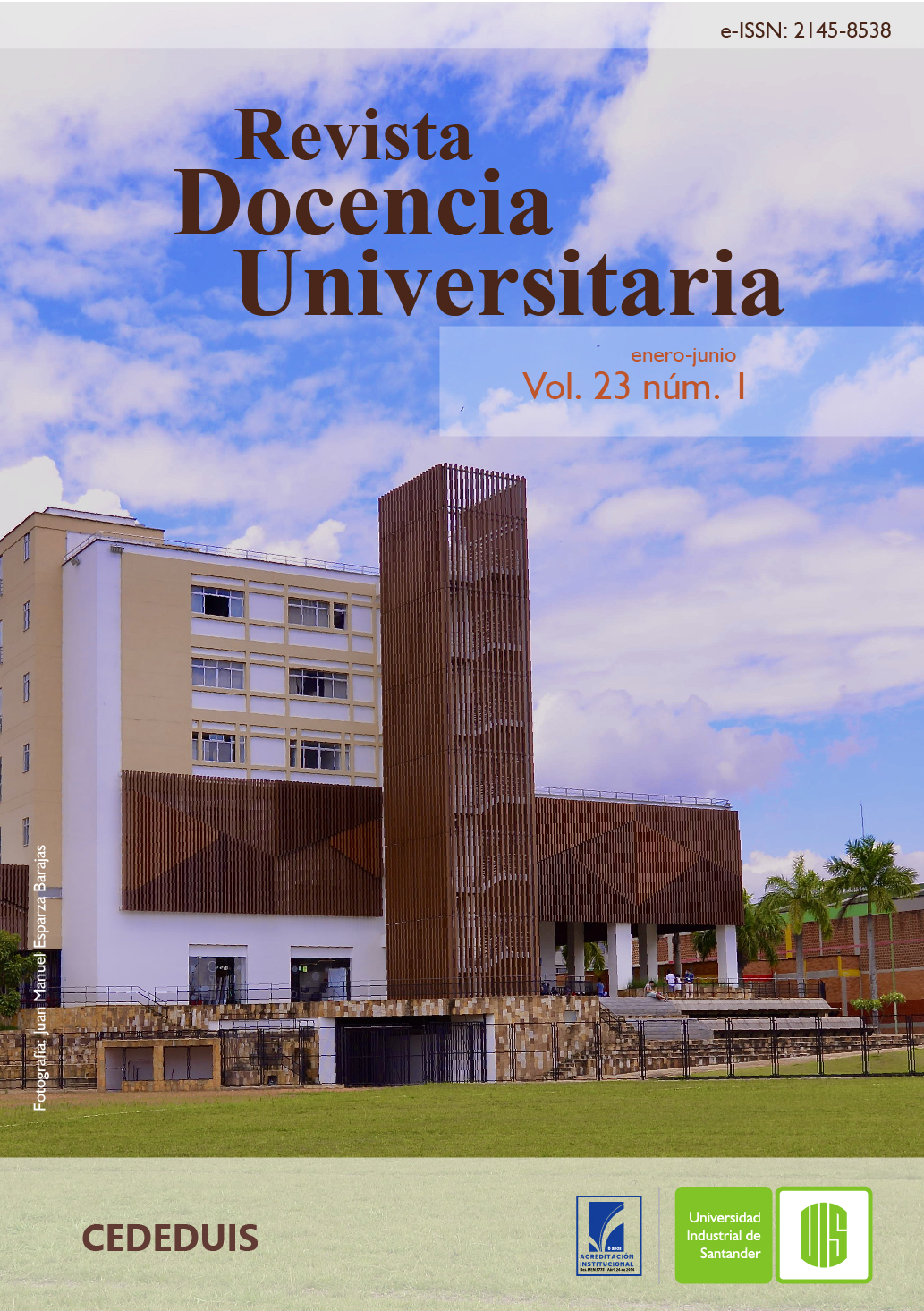Publicado 2022-07-15
Palabras clave
- ciencias naturales,
- realidad aumentada,
- estrategia de aprendizaje,
- cuerpo humano,
- anatomía
Cómo citar
Derechos de autor 2022 Revista Docencia Universitaria

Esta obra está bajo una licencia internacional Creative Commons Atribución 4.0.
Resumen
Este artículo se basa en los resultados del trabajo de investigación denominado “Estrategia didáctica mediada por la realidad aumentada para fortalecer la competencia representación de diversos sistemas y órganos de los seres humanos con los estudiantes del grado cuarto de la I. E. R. Monserrate”. El proyecto se originó tras evidenciar poco interés y apropiación de conceptos en el área de ciencias naturales, sumado a la implementación de estrategias didácticas tradicionales por parte de los docentes, que no motivan a los estudiantes y no permiten un aprendizaje significativo, por lo que repercuten en los bajos resultados obtenidos en las pruebas internas y externas de la institución. Este problema origina la búsqueda de soluciones, razón por la cual se propone como alternativa didáctica la realidad aumentada junto a plataformas virtuales como Anatomy Ar y Khan Academy, las cuales permiten asociar con facilidad los conceptos vistos en clase con la realidad, motivando el aprendizaje colaborativo, autónomo y participativo en los procesos de enseñanza. Esta investigación de tipo mixta aplica instrumentos de recolección de información como observación, entrevista y cuestionarios, los cuales fueron aplicados a doce estudiantes del grado cuarto. Se evidenció un impacto positivo en el desarrollo de competencias que, al ser aplicadas en diferentes situaciones, fortalecieron las habilidades de comprensión y apropiación de conceptos relacionados con los órganos del cuerpo humano.
Descargas
Citas
- Azuma, R. (1997). A Survey of Augmented Reality. Presence: Teleoperators and Virtual Environments, 6(4), 355-385. https://www.cs.unc.edu/~azuma/ARpresence.pdf
- Cardozo Galeano, G. D., Hernández Arteaga, I., Vargas Cañizales., D. C., García, A. C. (2018). Factores del contexto que influyen en las dificultades de aprendizaje. Revista Plumilla Educativa, 21(1), 59-79. https://doi.org/10.30554/plumidaedu.21.2975.2018
- Castellano Brasero, T., y Santacruz-Valencia, L. (2018). EnseñAPP: aplicación educativa de realidad aumentada para el primer ciclo de educación primaria. Revista Iberoamericana de Tecnología en Educación y Educación en Tecnología, (21), 7-14. https://doi.org/10.24215/18509959.21.e01
- Dulzaides Iglesias, M. E. y Molina Gómez, A. M. (2004). Análisis documental y de información: dos componentes de un mismo proceso. ACIMED, 12(2). http://scielo.sld.cu/scielo.php?script=sci_arttext&pid=S1024-94352004000200011&lng=es&tlng=es
- Gómez Carmona, J. H. y López Quintero, D. (2016). Realidad aumentada como herramienta que potencialice el aprendizaje significativo en geometría básica del grado tercero de la institución educativa Instituto Estrada. [Trabajo de grado], Universidad Tecnológica de Pereira, Colombia. http://repositorio.utp.edu.co/dspace/bitstream/handle/11059/6668/371335G 6 33.pdf.
- López C., Hormechea, K., González L. y Camelo Y. (2019). Uso de la realidad aumentada como estrategia de aprendizaje para la enseñanza de las ciencias naturales [tesis especialización, Universidad Cooperativa de Colombia]. https://repository.ucc.edu.co/bitstream/20.500.12494/14569/1/2019_realidad_aumentada_estrategia..pdf
- Márquez Domínguez, J. (2018). Juegos didácticos y la realidad aumentada, un análisis para el aprendizaje en estudiantes de nivel básico. RIDE Revista Iberoamericana para la Investigación y el Desarrollo Educativo, 9. https://doi.org/10.23913/ride.v9i17.388
- Méndez, C. (2001). Metodología: diseño y desarrollo del proceso de investigación.
- Editorial Mc Graw Hill.
- Ortiz Granja, D. (2015). El constructivismo como teoría y método de enseñanza. Sophia: colección de Filosofía de la Educación, 19(2), 93-110. https://doi.org/10.17163/soph.n19.2015.04
- Sáenz del Amo, R. (2020). Diseño y desarrollo de material didáctico en Realidad Aumentada: vídeo de presentación. [Trabajo de grado]. Universidad de Burgos, España. https://riubu.ubu.es/handle/10259/5350

